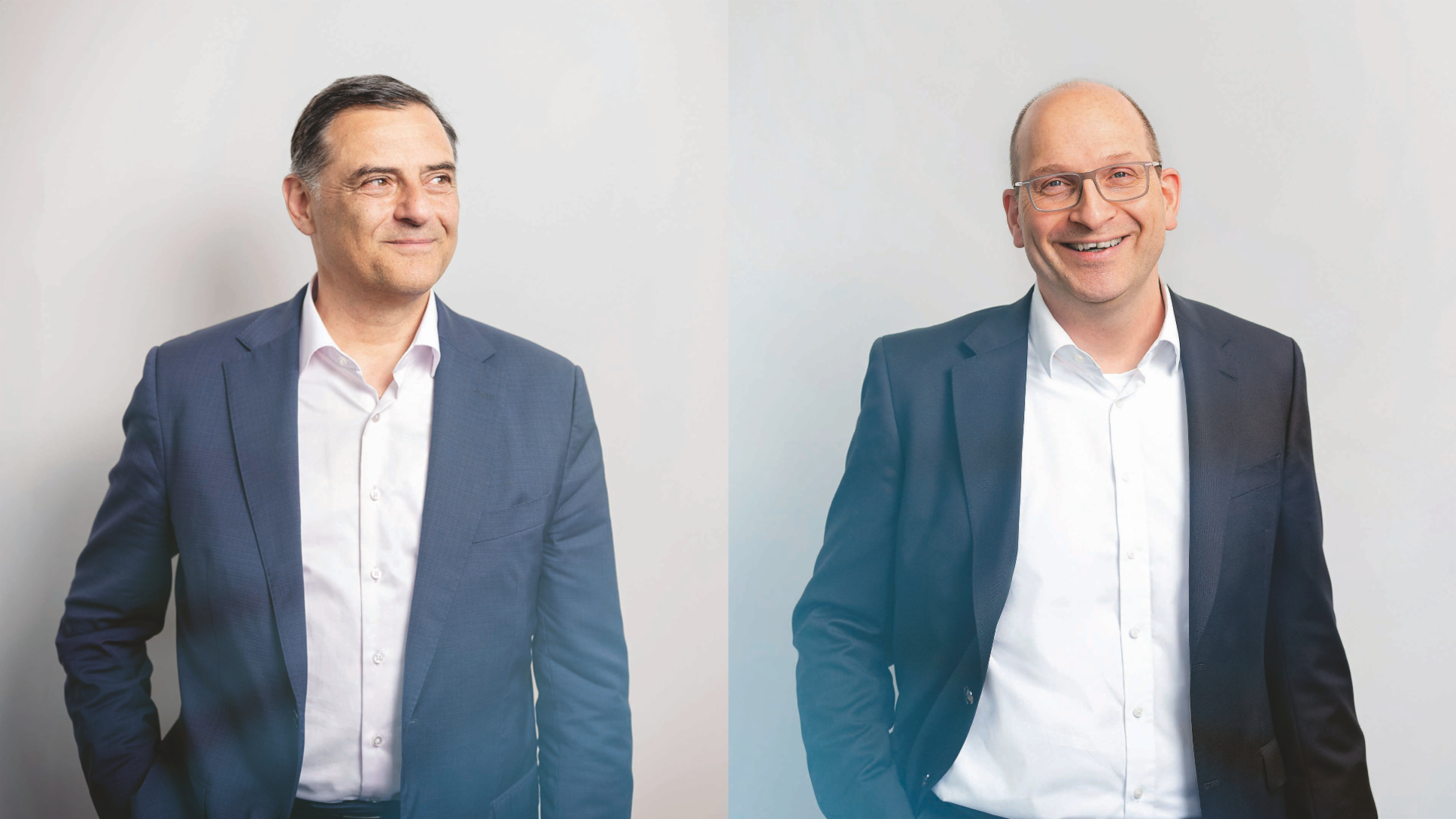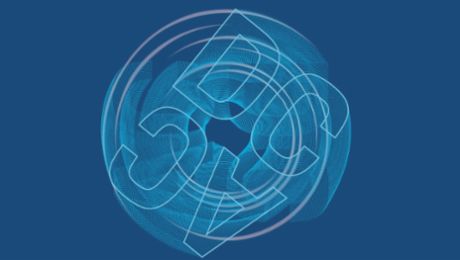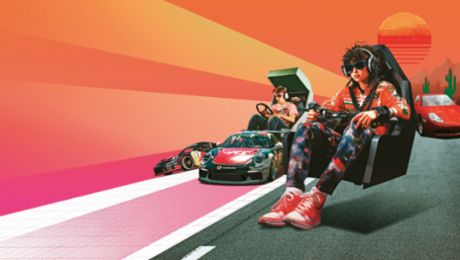Which trends will most shape automotive development in the future?
Steiner: Electrification will soon become ubiquitous in the automotive industry, though it will not entirely dominate it. After all, the pace of transformation is likely to vary in different market segments and regions of the world. Moreover, thanks to higher data transmission rates and data availability, as well as connection to backends in the cloud, more and more functions will be available in the car. Conversely, functions could then also shift from the vehicle to the backend. In this respect, the ‘software-defined vehicle’ will increasingly influence the automotive industry. Development, in turn, will increasingly involve software methods and simulation vehicles due to the increasing complexity alone.
“Data-driven development is essential to make increasing complexity manageable.” Michael Steiner
Mr. Eberl, what is your view of the most important trends?
Eberl: I would like to address the increasing heterogeneity of the world. We are observing changing expectations of vehicles. In many regions, we are seeing the emergence of new customer expectations influenced by independent, local ecosystems, among other factors. We have to respond to this on the vehicle side. There is also rising heterogeneity with regard to technical regulations: The requirements for vehicles and therefore our service products as well are becoming more diverse and increasingly demanding. We have to adapt to these developments and act in a manner that is specific to different regions of the world. Another megatrend I would like to mention here is the topic of ecological sustainability: Actually, the term ‘trend’ does not really do justice to this topic area, because it is more a widely recognized and accepted need for action—this is much more than a mere trend. The realization that humankind must respond to the CO₂ problem and also to other environmental issues has become increasingly widespread in recent years. For us, this means that the importance of sustainable engineering continues to grow.
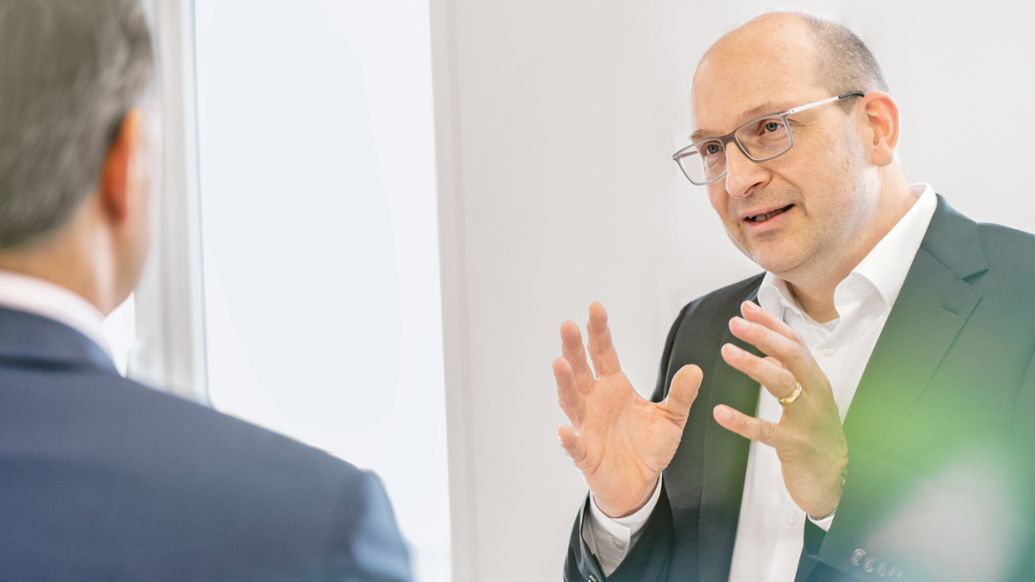
Steiner: Of course, this is particularly true for a manufacturer of luxury products like Porsche. We want to and must also be a role model in the area of sustainability—not only when it comes to operation of the vehicle, but also in its manufacture and recyclability. Admittedly, the latter does not play such a major role at Porsche because most of the vehicles we produce are never really taken out of service. And yet: Anyone who wants to credibly exemplify luxury today cannot do so only through high-tech, quality and brand. It also requires being a leader in terms of sustainability.
We haven’t heard much about highly automated driving lately. What can we expect here in the future?
Steiner: Technically, a lot is already happening today. I think that in two or three years, Level 4 driving will be technically possible, in principle. But that’s not an issue at Porsche at the moment. Since people always want to drive a Porsche themselves, Porsche cars will always have a steering wheel and pedals. But that doesn’t mean that we won’t offer our customers automated driving functions up to Level 3 in the future, for example to lighten the strain on drivers when parking or in traffic jams on the highway. When it comes to automated driving functions, our aim is not to be first to market. Rather, the focus of development for Porsche is on the highest possible utility and high reliability. Overall, however, highly automated driving at Level 4 or even Level 5 has to be approvable and make economic sense. In some cities— including Phoenix and San Francisco—test fleets are already on the road, in some cases in semi-commercial operation and without drivers. This works, but only with extreme technological outlays. It’s not yet economically viable. Another challenge is that to a large extent, many of the vehicles work with AI methods. One major challenge in this context is to provide the required proof of safety in a deterministic sense, because these systems learn. Performing test drives over millions of kilometers is no longer sufficient for this purpose. Instead, we need complementary methods—for example, through limiting driving strategies of a more deterministic nature, in the context of which the vehicle can develop a detailed strategy using AI methods.
“Our aspiration is to be a technology partner for the intelligent and connected vehicle.” Markus-Christian Eberl
Eberl: At Porsche Engineering, we are consistently investing in methods and capabilities for the intelligent and connected vehicles of the future. After all, we are certain that significant progress will be made in this area in the near future. I would like to touch on the following factors here: First, enhanced connectivity and driving assistance functions can turn lost time directly into useful time, for example in a traffic jam situation. This reduces waste of one of our most valuable resources—our time. This suggests that assisted driving functions will continue to increase, until reaching the point of automated driving. The second factor is a technical enabler: geometrically miniaturized computing power that is decreasing in price and increasing in performance. Today, this enables real-time processing of large quantities of sensor data in the vehicle. This is precisely the area in which we have built up extensive expertise and capacity. And we have the great advantage of being able to combine the virtual, algorithmic, and data-driven development of corresponding functions at our test site in Nardò with the real world—thus representing true end-to-end engineering.
Steiner: That’s an important point. Every manufacturer wants to work in a secure and reproducible environment so that they can efficiently test new functions in a wide range of variations, and train vehicles and networks.
What other issues are you currently focusing on?
Eberl: The topic of innovation competence is a major issue for me, because innovation cycles are becoming shorter and shorter nowadays. It is crucial for us to maintain or even enhance our innovative capability. That sounds straightforward, but it is difficult. Innovation competence means that innovations have to make it through the entire funnel to the end product. Our employees come up with innovative ideas, both small and large, almost every day. A key challenge that this involves is to pave the way for good ideas and not let them fall victim to everyday operational obligations or formalities. Culture plays a major role in being able to achieve that—even for a service provider. If I want to be a technology partner today, I have to deliver more to my customers than just a simple answer to the question they posed.
“We need an open culture of innovation—including from the partner to us.” Michael Steiner
What does that mean in concrete terms?
Eberl: Our aspiration at Porsche Engineering is to be a technology partner for the intelligent and connected vehicle. What that means is that we have the ability to think outside the box and provide our customers with an answer that extends beyond a potentially restrictive question—in other words, to think along with them, to open up the solution space, to participate in the design of the solution in a creative sense, and thereby deliver added value. To do this, we need appropriately designed interfaces to and collaboration models with our clients: Our approach with clients is to bring our own ideas to the table without losing sight of the original task, of course. This leads to added value for both sides: For the customer and for the service provider and its employees.
Steiner: I can only second that. Not all of tomorrow’s innovations will come from Weissach, but also from partners and certainly to some extent from completely different industries. That’s why we need an open culture of innovation—including from the partner to us. And that’s also why Porsche Engineering is so popular, not only with us. The engineers and software developers bring their own ideas to the table, yet remain customer-focused. It doesn’t make sense to try to make something palatable to customers which they don’t even want. Porsche Engineering also has the ability to provide input as a suggestion during the course of a project which wasn’t part of the specifications but adds value. We then have to listen and not close things down right away. That’s what I mean by innovation permeability.
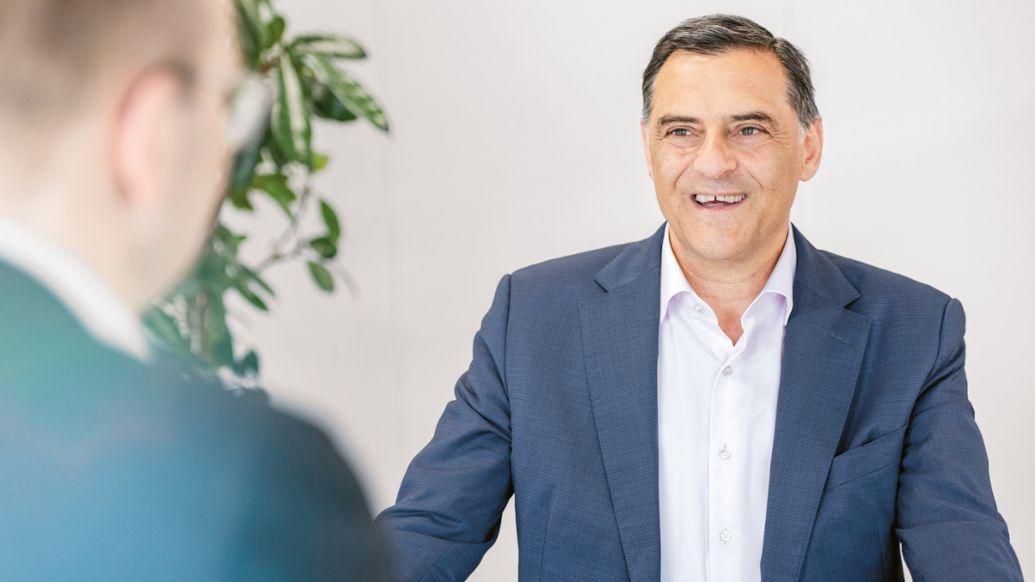
What distinguishes Porsche Engineering in its role in a partnership of equals?
Eberl: To be successful, you need knowledge, for starters. But you also need experience, which is something you can’t just conjure out of thin air, because it accrues over a long period of time and is a kind of cumulative knowledge from continuous activity. As a subsidiary of a manufacturer, we have been active in automotive development for decades and understand not only the new topics, but also their interconnectedness with the traditional disciplines as well as their integration into the overall vehicle. So we not only have specific knowledge, but also experience—a lot of experience! The third ingredient is culture: We create framework conditions that unleash creativity and promote our capacity for implementation. We structure our services on the basis of these three pillars—knowledge, experience and culture—to meet the specific needs of our customers. With this Porsche Engineering triad, we generate added value for our clients.
“We create framework conditions that unleash creativity and promote our capacity for implementation.” Markus-Christian Eberl
Mr. Steiner, cars are becoming increasingly complex. Is this shifting the division of labor between OEMs and development partners?
Steiner: There will be a tendency for more development to be carried out by third parties in the future. This has to do with several factors: First, many development service providers have specialized—from integrating a new radar sensor into an existing vehicle system to developing a complete vehicle variant. As a manufacturer, we formulate a strategy for in-house and third-party services. There has long been a trend for technical value creation to increasingly be done by development service providers. Secondly, we face the major challenge of finding qualified personnel in Germany and Central Europe. The existing shortage of experts means that we must increasingly head to places where welltrained employees can be found. This includes China, where there are many computer scientists, electrical engineers and mechanical engineers. India is very strong in terms of software expertise, as are parts of Eastern Europe. There are limitations on the ability to bring all these talented people to Central Europe. Instead, companies have to go where the talent is available. And this can also involve going through tech partners like Porsche Engineering.
Can the use of AI and data-driven development help alleviate this shortage of experts?
Steiner: Data-driven development is essential to make increasing complexity manageable. Because computers are much better than humans at pattern recognition, we also need to use this approach. This has a positive side-effect: If we develop in a more data-driven way and use AI methods to find errors and anomalies, we might also be able to optimize solutions in an automated way—in other words, carry out development activities with computer support. And in the future, we might be able to work in a more geographically distributed way in a network of development hubs around the world. Not everything will become data-driven and virtual overnight, but we will presumably see more and more of it.
“We unite virtual, algorithmic and data driven development with the real world.” Markus-Christian Eberl
Eberl: To enable precisely that, we are investing in our own methodological capabilities not only with a view to specific customer demand, but out of conviction. Take the JUPITER test vehicles, for example, in which we can integrate and test new sensor technology for automated driving very quickly on the basis of standardized middleware such as ROS and DDS. Using code libraries, we can quickly access these sensors or their data, for example, to create and test new algorithms. We are doing this because we believe that data-driven development will play a decisive role in the complete pipeline from collection to storage and control of data. That is why we are also continuing to upgrade the testing grounds in Nardò, where a high-performance 5G network is already available today. With this technology in place, we can, for example, Offer support to our customers with cloud-based data services, so that their developers can access newly generated data directly and quickly, not just on site, but worldwide.
Steiner: Being able to access data from vehicles on a test track like the one in Nardò here in Weissach in real time, with high bandwidth, is something we’ve dreamed about for a long time. And that dream is now coming true.
Mr. Steiner, let’s look 20 years into the future. What will be different in a Porsche compared to today? And what will remain the same?
Steiner: Some things will remain the same or continue to improve step by step: For example, we will continue to work on ensuring that the vehicle implements all the driver’s wishes even more precisely and responsively—whether on the steering wheel, the brakes, or the accelerator pedal. But some things will also change fundamentally, such as the interaction with the vehicle: It will be done more through natural language, with which the driver can call up comfort or office functions. Video conferencing will probably also become a matter of course. This will be made possible by connectivity to the outside world that is at least double-redundant. It is likely that vehicles will also communicate with each other, perhaps via 6G or 7G networks.
“The ‘software-defined vehicle’ will increasingly influence the automotive industry.” Michael Steiner
Vehicles will also store and use energy more intelligently. Advances in cell chemistry will mean that batteries will become smaller and cheaper. Their initial CO₂ footprint is also likely to shrink—as will plastics and aluminum and steel. Green steel, for example, is likely to become the state of the art in the future, and hopefully green aluminum as well. Just a few weeks ago, we entered into a new partnership with the Norwegian company Hydro, which will work with us to further reduce the CO₂ footprint of our vehicles with regard to the use of aluminum. And of course, in 20 years’ time, a Porsche will also be able to drive itself, at least in the vast majority of situations. At the same time, however, driving should be at least as much fun as it is today, because we want to bring the performance of today’s super sports cars to normal Porsche vehicles.
Info
Text first published in the Porsche Engineering Magazine, issue 2/2023
Copyright: All images, videos and audio files published in this article are subject to copyright. Reproduction in whole or in part is not permitted without the written consent of Dr. Ing. h.c. F. Porsche AG. Please contact newsroom@porsche.com for further information.
